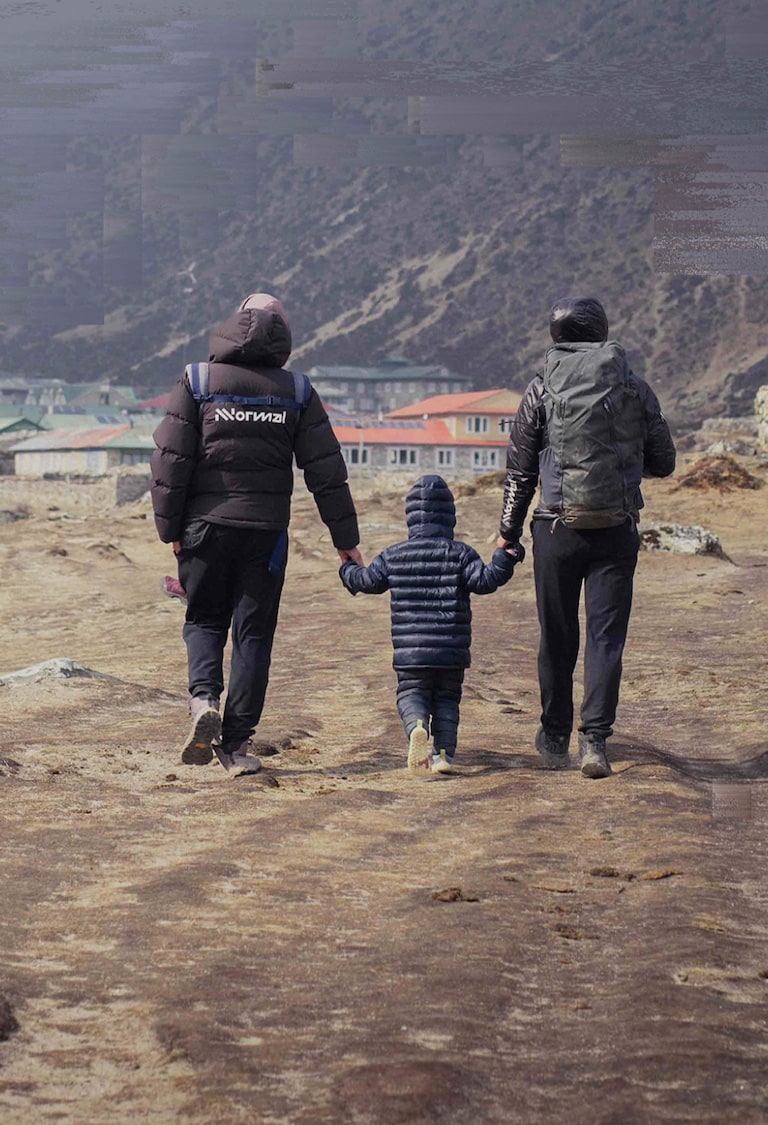
Stories / May 2023
A NNormal adventure in the Himalayas
Family above all
Week 3
Thoughts about sustainability, sport
and family in the Himalayas
and family in the Himalayas
11. May 2023 / Pheriche, Nepal
More than two weeks have gone by since we arrived in Nepal and got to Pheriche, a little village in the heart of the Himalayas. One of the pluses of being at an altitude of more than 4,350m (14,000 feet) is that you see everything from a different perspective. We have met some incredible people, seen what their houses are like, learned some of their customs, and have learned to live with a lot less. In other words, living with the bare necessities.
In fact, something as common as going to a shop and finding absolutely everything there is unthinkable here. In a place like Pheriche, people only consume things that can be produced or grown locally. There are no roads or transport to bring food from the large towns or cities. Without realising it, we’ve gone without a lot of the things we have at home. And we don’t actually need anything else.
This led us to discuss sustainability with Emelie Forsberg and Kilian Jornet. They are very aware of environmental responsibility in their everyday lives and told us that the key to being sustainable is the little decisions you make, as best you can, depending on the kind of life you lead.
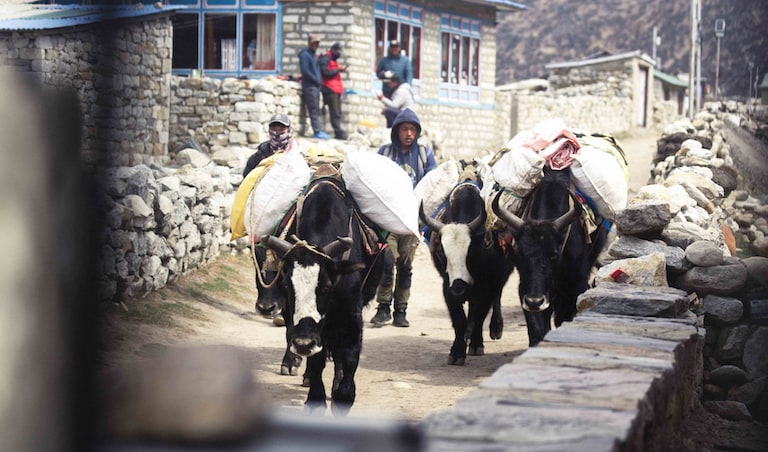
Transport of food by locals in Pheriche.
Being an athlete and being sustainable
When we talked about being sustainable with Emelie, we couldn’t help thinking about the connection that every person has with nature. The more connected a person is with the natural environment around them, the more environmentally-aware they become.
Emelie pointed out that every small gesture adds up when it comes to being sustainable. Everyone, as far as their situation allows, can do more or less to take care of their environment. “Everyone can take actions that will make them more sustainable, to a greater or lesser extent. In my case, I try to take decisions that I feel comfortable with and be true to my beliefs. I would love to be a livestock farmer and live only on what I grow on my farm. But I have decided to be an athlete, so I do everything I can to be sustainable in that position,” she said.
“We talked a lot about sustainability when we were planning this trip, because we all know that travelling is not the best thing for our planet. So, we tried to combine several trips in one, to involve the whole family and make it a much longer adventure. We’re fully aware that this is a great journey, so we’re trying to make the most of every moment here,” Emelie Forsberg added.
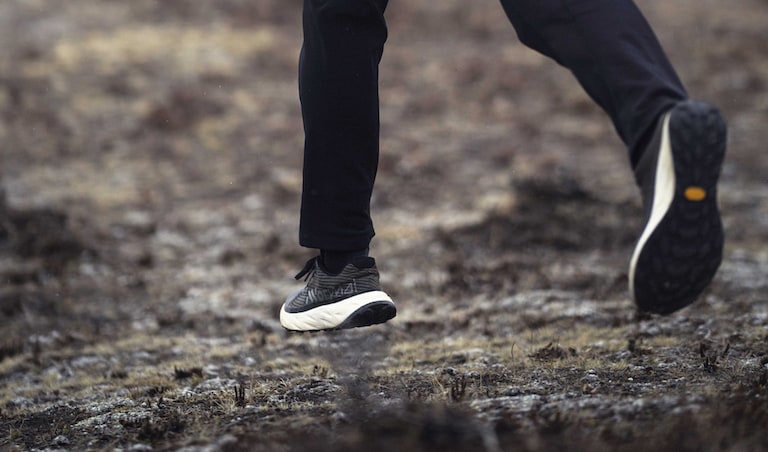
“Little decisions are very important. As an athlete I can not only use my voice; I can also inspire people with my actions.”
Emelie Forsberg
The duality between nature and tourism
Although the Himalayas may seem remote at first glance, they are also a popular destination for nature lovers and outdoor sport enthusiasts. Actually, one of our friends from Namche told us that around 40,000 people travel through the village every year. It is in a strategic location for people who want to visit Sagarmatha National Park.
This means that humans are leaving their trace on the wonderful natural environment of the Nepalese mountains. There is much more waste now than a few years ago. This made us feel sad and a bit guilty, and it made us reflect on how nature lovers like us make a mess of nature without realising it.
Fortunately, we also had the pleasure of meeting some of the people who are working every day to solve this problem. They have launched some initiatives inviting tourists and locals to collaborate on waste collection.
They have shown us that one good way to reduce the impact of our journey through the Himalayas is to carry a bag to collect any rubbish we find along the way. This is something people can do in any kind of environment, anywhere around the world.
Sustainability and the new generations
Spending so much time with Emelie, Kilian and their family made us realise that they are all environmentally-aware and that people of any age can be responsible. Maj and Ylva-Li have grown up surrounded by nature with people who have always tried to respect it.
We asked Emelie what the trick to getting children to integrate sustainability into their daily lives was. She told us that it is actions not words that inspire the new generations. “I wouldn’t know how to teach my daughters to be more sustainable. In fact, there are things I’ve never taught them, but they’ve learned because that’s what they’ve seen us do, like picking up rubbish when we go for a walk in the mountains,” she said.
“It’s amazing to see how children copy what they see adults do. That is how we can inspire the new generations.”
Emelie Forsberg
By being more aware of how fragile our environment can be, and by taking small actions to preserve it, we can teach the new generations to take care of nature.
People start to connect with the environment from the very youngest of ages: that is something we’ve learned by staying with Emelie’s family in the Himalayas.
Interesting details of our NNormal
experience in the Himalayas
An exhibition of sculptures made from waste.
The Bally Peak Outlook Foundation works every day to keep Nepal’s mountains free of rubbish. It raises awareness and gets all the tourists who visit Sagarmatha National Park involved in keeping the environment litter-free.
Before we left Namche for Pheriche, we took the opportunity to visit the foundation’s headquarters. There we were able to learn more about their environmental commitment and their initiatives to support waste processing. One of these projects is an exhibition of objects and sculptures made from waste and litter collected in the national park.
We learned interesting facts about the Himalayan flora and fauna, and understood the importance of preserving them and supporting the conservation of such an incredible place.
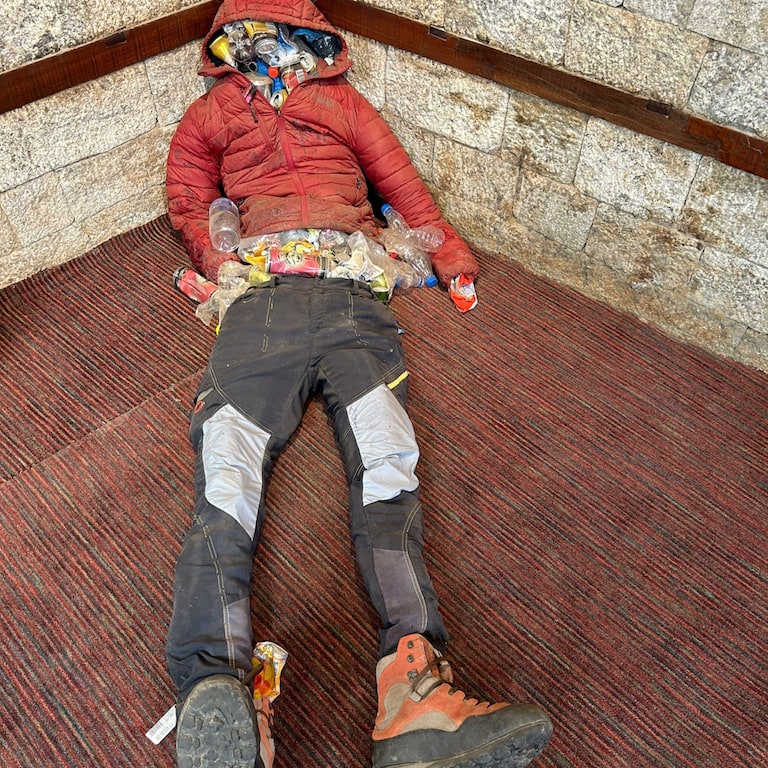
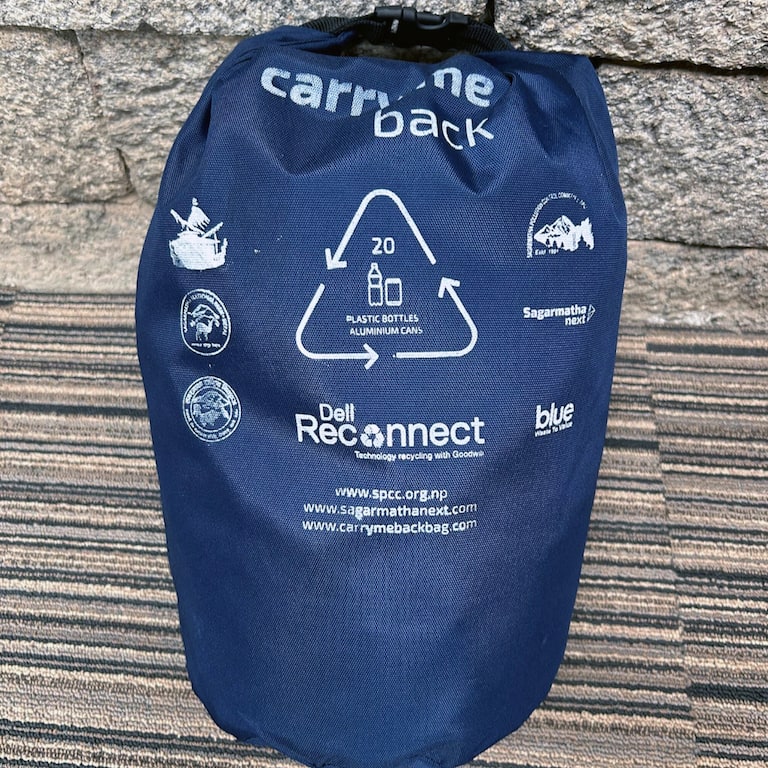
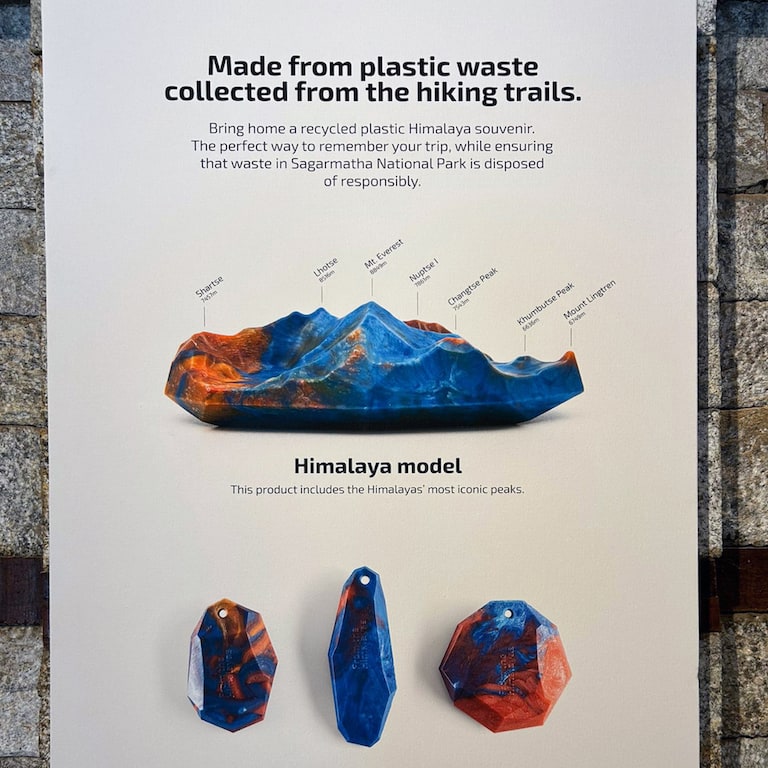
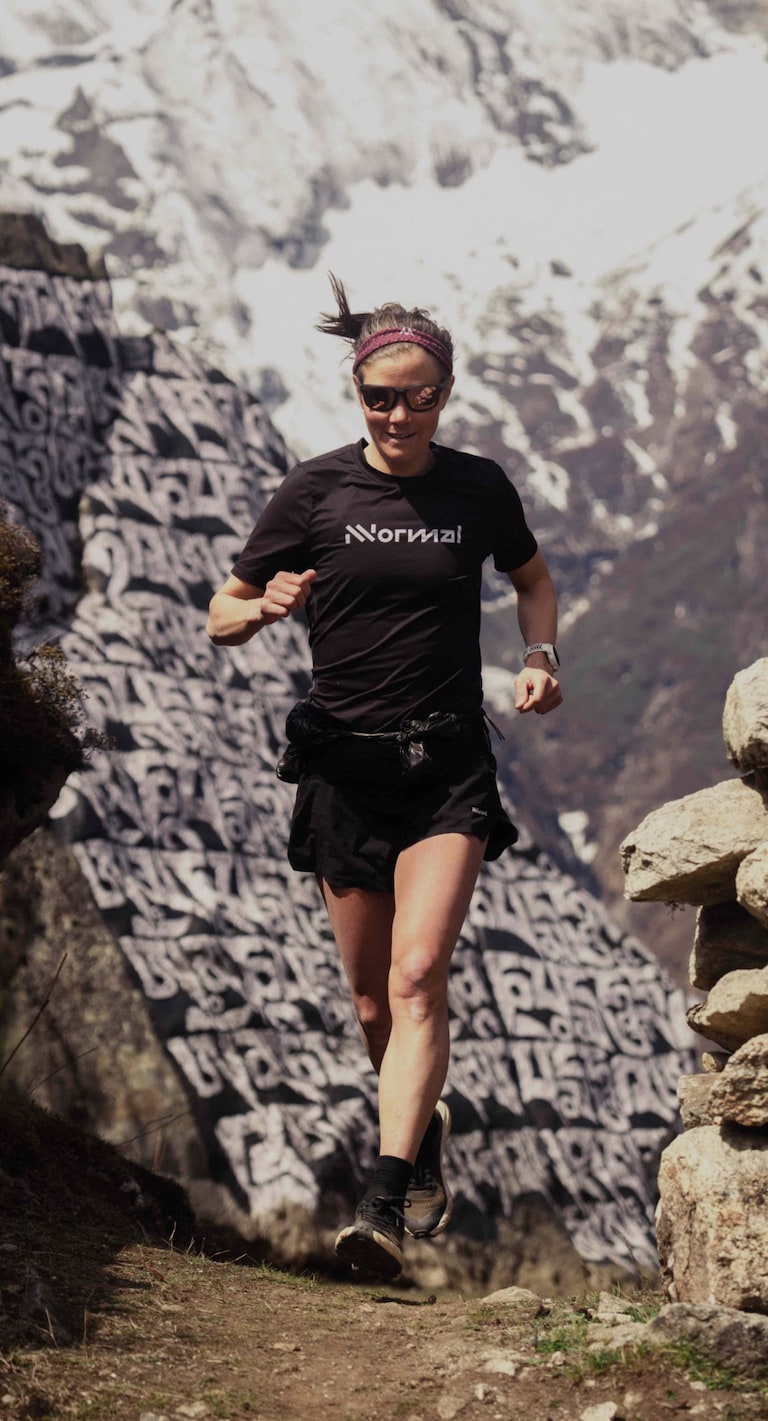
Emelie’s outfit for
the Himalaya adventure
See all outfit
Subscribe if you want to be the first to read the next chapter of this adventure!
Subscribe here
Read previous chapter
Photography: Julien Raison
Share with a friend
